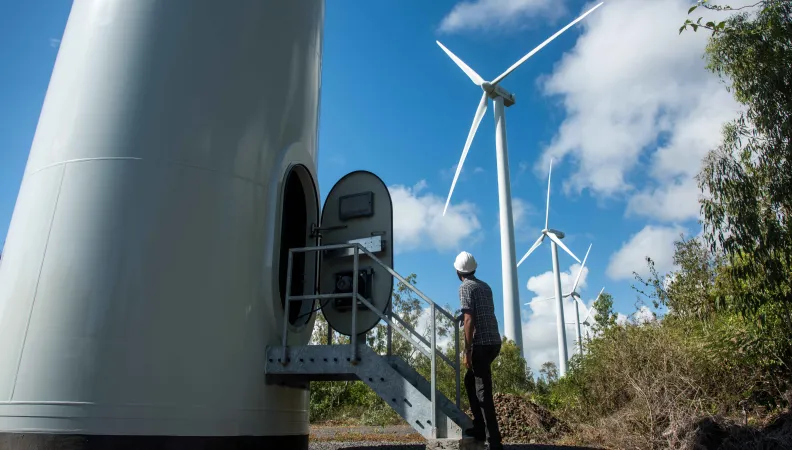Share the page
Pilot installation of an airborne wind turbine connected to the national grid (Skysails)
Project


-
Project start date
-
Status
In progress
-
Estimated date of project termination
-
-
Project financing date
-
-
Financing duration
-
2 years
-
Type of program
-
FFEM
-
Global financing amount
-
1700000 €
-
FFEM financing amount
-
850000 €
-
Project lead member institution(s)
-
AFD
-
Country and region
-
Mauritius
-
Type of financing
-
Grant
-
Beneficiaries
-
SkySails Power Indian Ocean Ltd
Over-dependent on fossil energy to produce the electricity it needs, Mauritius is seeking to become more resilient and reduce its greenhouse gas emissions by developing renewable energies. With this in mind, the “SkySails Power” project, supported by the FFEM, aims to trial innovative technology using the power of the wind and a kite sail.
Context
The Republic of Mauritius is dependent on imported fossil energy, which makes up 84.6% of its electricity mix. Despite the use of bagasse as an energy source, and projects to develop renewable energies, the renewables portion of the country’s energy mix fell from 30% in 2000 to 18% in 2018. In 2019, the island’s government put in place a process authorising the installation of innovative clean energy production technologies, with a view to encouraging resilience and energy transition.
As part of this, the “SkySails Power” pilot project – to which the FFEM lends its expertise – aims to trial unprecedented cutting-edge technology employing the power of the wind: electricity is produced from the tractive force on a kite sail.
Description
The project has 3 components:
- Demonstrate the relevance, operability and robustness of the technology in an environment typical of the tropical and island zones of the Indian Ocean exposed to cyclones and subject to the trade winds.
- Confirme feasibility and identifying the impacts of integrating such a solution on an island grid in an inter-tropical region.
- Strengthe local skills in engineering and electrical engineering to be able to install, operate and maintain the equipment locally, and in the longer term to plan for deployment on a larger scale.
Outcomes
- Annual minimum production of 300 MWh operate for at least 6,000 hours a year (80% of the time)
- Prove the robustness of the equipment under cyclone conditions and in the face of abrupt changes in the wind.
- Demonste that the autopilot can function and operate the kite for up to one week autonomously
- Operate and performe maintenance locally under instruction from engineers, with an average resolution time of less than 24 hours and availability of over 75%
- Manage over 80% of incidents by local operators, without remote assistance
Innovative and exemplary features
The project supported by the FFEM is particularly novel, with the generation of electricity from high altitude winds (300 metres) being a technically ambitious innovation. The kite perfected in this programme is a globally unique technology.
The mobility of the kite sail results in 4 - 5 times greater energy production than a static wind turbine of similar capacity. Besides its effectiveness, the project also allows energy storage costs to be reduced.
This project represents the first attempt at the commercial use of such technology to input into a national island grid. It may yield an interesting technological solution to the question of decentralised electricity production, complementing existing technologies such as photovoltaic or hydroelectric production in so far as wind behaviours permit.


